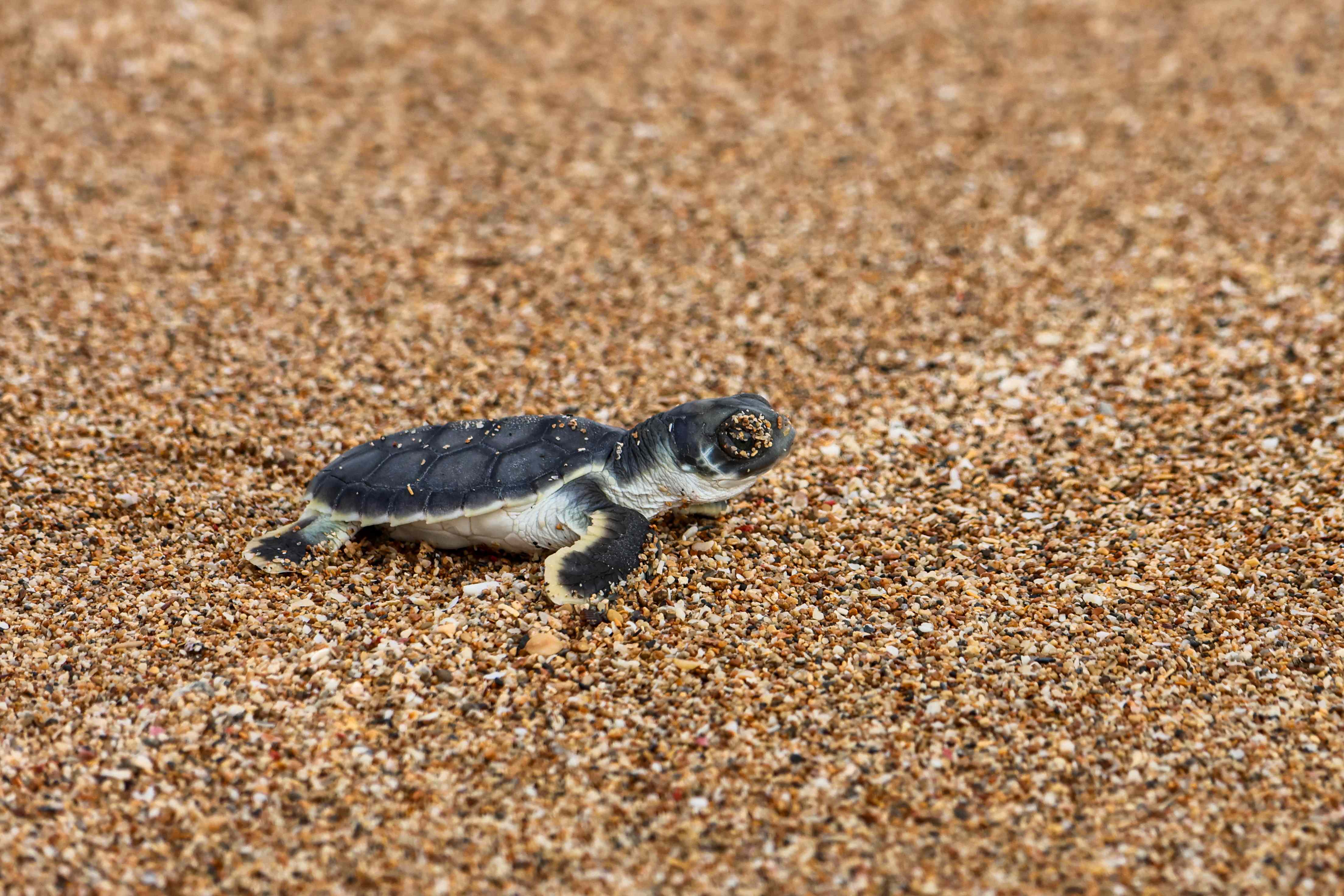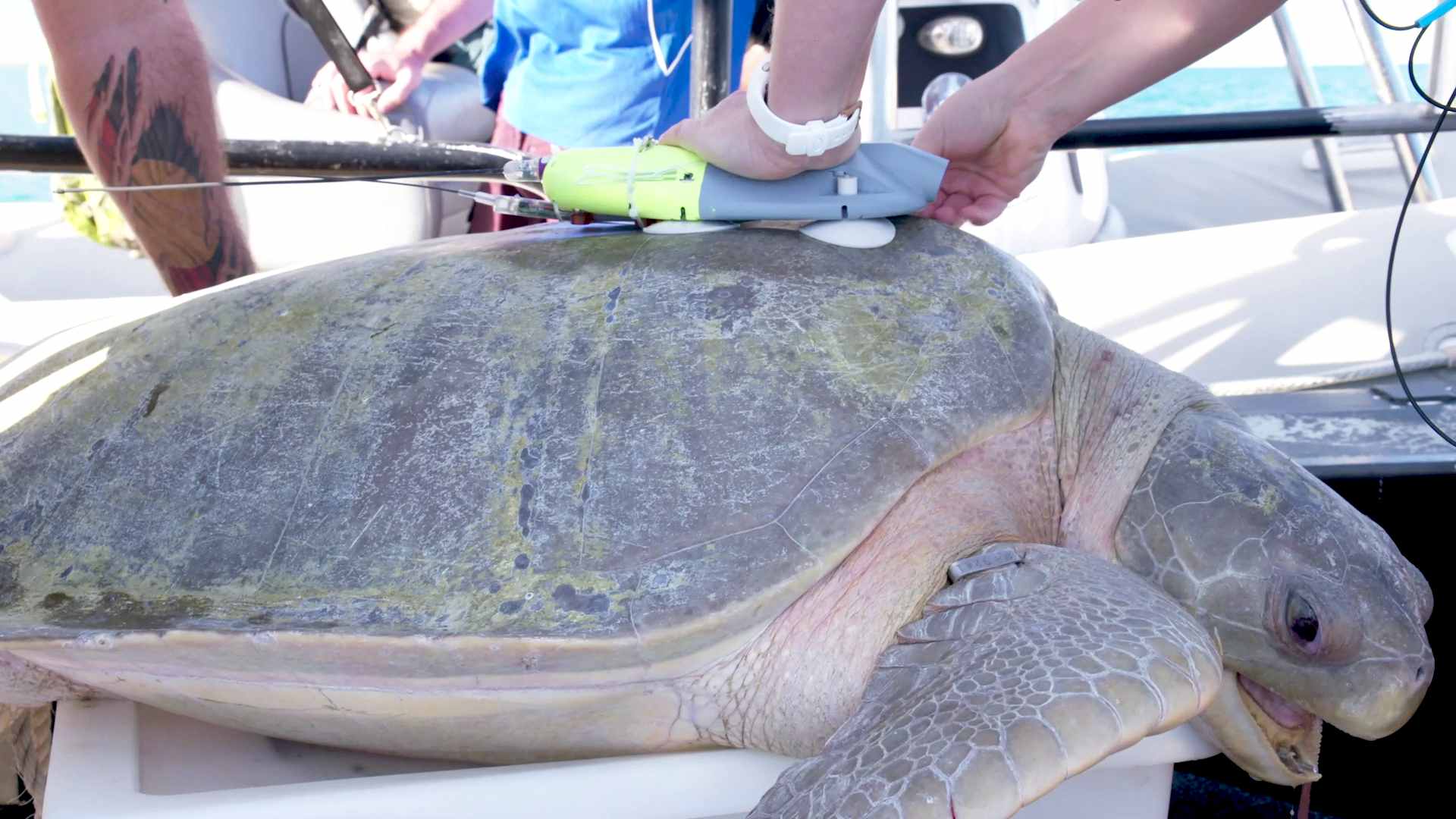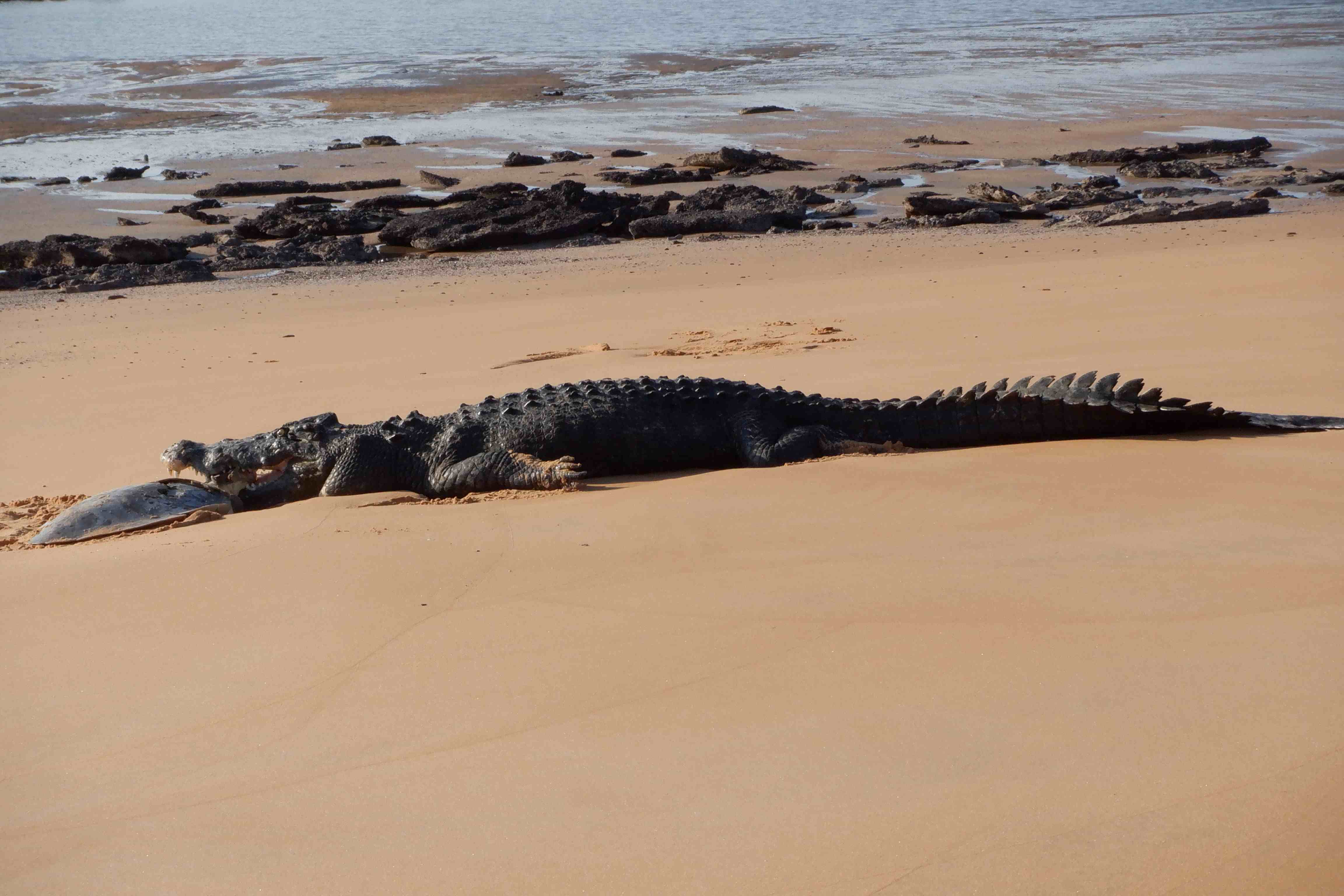

Extreme temperatures result in low hatching success at Thevenard and Delambre Islands
February 2025
Teams of North West Shelf Flatback Turtle Conservation Program staff and volunteers head to Thevenard and Delambre Islands to conduct nest excavations each February. Performed after the incubation period, around seven weeks since eggs were laid, the teams locate and dig up to 30 marked nests at each location and remove the remnants of the eggs and any deceased embryos or hatchlings inside.
The number of intact eggs (from which hatchlings have not successfully hatched) are counted, and the development stages of unhatched embryos are noted. The ‘hatching success’ (percentage of successfully hatched eggs from the total clutch) is calculated. By searching for any deceased hatchlings within the nest, the ‘emergence success’ is calculated as the percentage of hatchlings in the clutch that made it successfully out of the nest.
This year’s excavations produced very low hatching success and emergence success compared to previous years.
Thevenard Island:
- 21 nests were excavated (nine were not found).
- The average nest had 50.2 eggs.
- On average, there was 9% hatching and emergence success from found nests. The previous year, hatching success was 69% and emergence success was 68%.
Delambre Island:
- 27 nests were excavated (three were not found).
- The average nest had 46 eggs.
- On average, there was 37% hatching and emergence success from found nests. The previous year, hatching success was 84% and emergence success was 83%.
Throughout the 2024/25 nesting season, the Pilbara region had sustained above average rainfall and record-breaking temperatures. Onslow and Thevenard Island broke records for the highest summer mean maximum temperature records, with maximum average temperatures of 36.3C and 33.2C, respectively. Karratha and Onslow broke records for the highest summer mean minimum temperatures, with minimum average temperatures of 26.5C and 24C, respectively. See the source of temperature data here.
This year, nest excavations also occurred two weeks after Tropical Cyclone Sean hit the Pilbara coast, delivering high rainfall and tides. On Thevenard Island, several nests had been washed away due to erosion from the high tides, and evidence of inundation (wet sand) was observed much higher than the high tide line.
The extreme heat and cyclone activity are thought to be factors that have resulted in the low hatching and emergence success at both rookeries for the 2024/25 nesting season. Further analysis of sand temperature data will provide greater insights.
You can read more about the susceptibility of Pilbara beaches to the impacts of climate change, and how this impacts flatback turtles, here.








